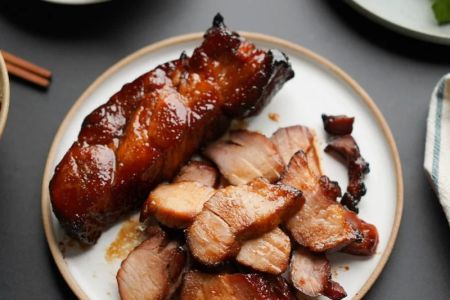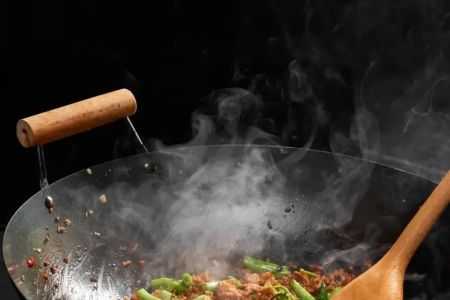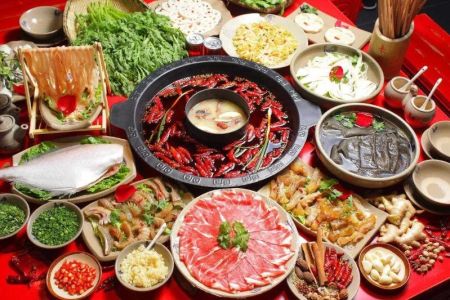Homemade Chinese-Style Sweet and Sour Pork Recipe: A Step-by-Step Guide
- 1. Why Choose Sweet and Sour Pork?
- 2. Ingredients You’ll Need for Homemade Sweet and Sour Pork
- 3. How to Make Homemade Sweet and Sour Pork
- 4. Tips for Perfect Sweet and Sour Pork Every Time
- 5. Where to Buy Quality Ingredients for Sweet and Sour Pork
1. Why Choose Sweet and Sour Pork?
Sweet and sour pork is a classic dish in Chinese cuisine that combines crispy pork with a vibrant sauce made from sugar, vinegar, and other savory ingredients. It’s a crowd-pleaser that balances sweet, tangy, and savory flavors perfectly. Whether you're new to cooking Chinese food or an experienced chef, making homemade Chinese-style sweet and sour pork is an enjoyable challenge and an excellent way to introduce yourself to Chinese culinary traditions.
Not only does this dish showcase the delicate balance of flavors, but it also gives you the opportunity to master key cooking techniques like stir-frying and sauce-making. It's a great choice for dinner parties, family gatherings, or even just a cozy meal at home.
2. Ingredients You’ll Need for Homemade Sweet and Sour Pork
Before diving into the recipe, let’s take a look at the essential ingredients for making sweet and sour pork at home:
Main Ingredients:
- Pork Tenderloin: The main protein for this dish, providing a tender and juicy texture once cooked.
- Bell Peppers and Pineapple: These add a sweet and tangy flavor, complementing the pork and sauce perfectly.
- Onions: Onions add a savory base flavor and are essential for depth.
Sauce Ingredients:
- Rice Vinegar: Provides the necessary acidity to balance the sweetness of the sugar.
- Ketchup: A surprising but key ingredient in this dish, giving the sauce its signature tangy flavor.
- Sugar: Sweetness that rounds out the sauce, giving it the characteristic "sweet" flavor.
- Soy Sauce: For umami and a slight salty contrast to the sweetness.
- Cornstarch: Used to thicken the sauce and create a glossy finish.
With these ingredients, you’ll be able to prepare a traditional Chinese-style sweet and sour pork dish that rivals takeout versions, but with the added bonus of being homemade and customizable to your taste.
3. How to Make Homemade Sweet and Sour Pork
Now that we have all the ingredients, let’s dive into the step-by-step process of making sweet and sour pork:
Step 1: Prepare the Pork
Cut the pork tenderloin into bite-sized cubes. Coat each piece with a light layer of cornstarch, which helps achieve that crispy, golden texture when fried.
Step 2: Fry the Pork
Heat a wok or deep pan with oil. Once the oil is hot, carefully fry the pork cubes in batches until golden brown and crispy. Remove them and set them aside on a paper towel to drain excess oil.
Step 3: Make the Sweet and Sour Sauce
In a bowl, mix rice vinegar, ketchup, soy sauce, sugar, and a little water. Whisk until the sugar dissolves. In a separate bowl, dissolve cornstarch in a bit of water to make a slurry. This will help thicken the sauce later.
Step 4: Stir-Fry the Vegetables
In the same wok, add a little more oil and stir-fry the bell peppers, onions, and pineapple until they are tender and lightly caramelized. This brings out their natural sweetness.
Step 5: Combine Everything
Add the crispy pork back into the wok, followed by the sweet and sour sauce. Stir everything together, allowing the sauce to coat the pork and vegetables. Add the cornstarch slurry to thicken the sauce and continue stirring until everything is well-coated and glossy.
Step 6: Serve and Enjoy
Serve your homemade Chinese-style sweet and sour pork with a side of steamed rice for a complete meal. Enjoy the balance of sweet, sour, and savory flavors!
4. Tips for Perfect Sweet and Sour Pork Every Time
Here are some expert tips to help you make the best sweet and sour pork:
- Use fresh ingredients: The quality of the pork and vegetables can make a huge difference in the final dish.
- Fry the pork in batches: This ensures the pork stays crispy and doesn’t overcrowd the pan, which can cause it to become soggy.
- Adjust the sweetness and acidity: If you prefer a sweeter dish, add more sugar; for more tang, increase the vinegar.
- Don’t skip the cornstarch: The cornstarch slurry is essential for achieving that perfect glossy sauce that coats everything beautifully.
5. Where to Buy Quality Ingredients for Sweet and Sour Pork
To make this dish truly shine, you’ll want to use the best ingredients. You can easily find high-quality pork, vegetables, and sauces at your local grocery store, but for authentic Chinese ingredients, visit GoChinaRose. They offer a wide range of premium Chinese food products, including soy sauce, rice vinegar, and other essential cooking ingredients.
Shopping at trusted online stores like GoChinaRose ensures that you’re using the right ingredients to elevate your homemade sweet and sour pork to the next level. Check them out for all your Chinese food needs!






![Top Chinese Restaurants for Authentic Cantonese Cuisine in [Your City]](https://img.gochinarose.com/d33/2507/4157910400_450x300.webp)
